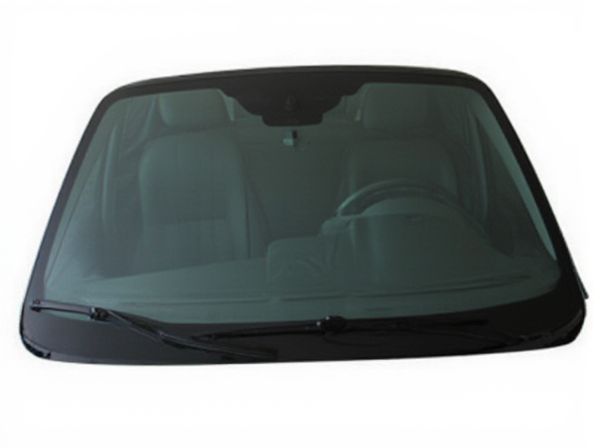
Photo illustration: OEM Specification vs Aftermarket Specification
OEM specifications ensure parts meet the original manufacturer's standards, providing optimal compatibility and reliability for your vehicle. Aftermarket specifications may vary, offering a range of quality and performance that can affect your vehicle's operation and longevity. Choosing between OEM and aftermarket parts requires careful consideration of your priorities for cost, quality, and warranty coverage.
Table of Comparison
| Specification | OEM Windshield | Aftermarket Windshield |
|---|---|---|
| Material Quality | High-quality laminated glass matching original standards | Variable quality, may use lower-grade laminated glass |
| Fit and Dimensions | Precise fit ensuring perfect alignment and sealing | May have minor fitment variations, affecting sealing |
| Optical Clarity | Clear, distortion-free glass meeting manufacturer specs | Potential minor distortions impacting visibility |
| UV Protection | Built-in UV protection as per vehicle standards | Inconsistent UV protection quality |
| Safety Standards | Meets all regulatory and safety requirements | Varies; may not meet all safety certifications |
| Price | Higher cost due to quality and brand | Lower cost but variable quality |
| Warranty | Typically includes manufacturer warranty | Limited or no warranty coverage |
Introduction to OEM and Aftermarket Specifications
OEM specifications define the original equipment manufacturer's precise standards for parts and materials, ensuring compatibility and performance identical to the vehicle's original components. Aftermarket specifications vary widely, with parts designed to fit multiple models or offer enhanced features, but may differ in quality, durability, and adherence to OEM standards. Understanding these distinctions is crucial for selecting parts that meet safety, warranty, and performance requirements.
Defining OEM Specification: What Does It Mean?
OEM specification refers to the exact standards and design criteria set by the Original Equipment Manufacturer for parts and components used in a product. These specifications ensure compatibility, performance, and reliability as intended by the vehicle or equipment maker. Adhering to OEM specifications guarantees that replacement parts meet strict quality and safety requirements established during the original design process.
Understanding Aftermarket Specification
Aftermarket specification refers to parts or components designed to replace original equipment manufacturer (OEM) products but are not produced by the original manufacturer. These specifications often prioritize compatibility, cost-effectiveness, and availability, sometimes leading to variations in quality and performance compared to OEM standards. Understanding aftermarket specification involves evaluating material composition, manufacturing processes, and adherence to industry standards to ensure proper fit and function in specific vehicle models.
Key Differences Between OEM and Aftermarket Parts
OEM specifications ensure parts are made to exact manufacturer standards, guaranteeing compatibility, quality, and warranty compliance. Aftermarket parts vary widely in quality and design, often offering lower costs but potentially compromising fit and durability. Key differences include material quality, precise fit, and adherence to original engineering tolerances, impacting vehicle performance and safety.
Quality and Performance Comparison
OEM specifications ensure components meet the original manufacturer's rigorous standards, resulting in consistent quality and optimal performance tailored to specific vehicle models. Aftermarket specifications vary widely, often prioritizing cost savings, which can lead to discrepancies in material durability and fitment precision, potentially affecting overall performance and longevity. Choosing OEM parts generally guarantees reliability and compatibility, whereas aftermarket alternatives require careful evaluation of manufacturer reputation and product reviews to maintain comparable quality.
Cost Implications: OEM vs. Aftermarket
OEM specifications typically result in higher initial costs due to strict adherence to original manufacturer standards and premium materials, ensuring optimal performance and warranty compliance. Aftermarket parts often offer lower upfront expenses as they are produced by third-party manufacturers with variable quality, potentially leading to increased maintenance costs or reduced lifespan. Long-term cost implications favor OEM parts for reliability and fewer replacements, while aftermarket options appeal to budget-conscious consumers seeking immediate savings.
Warranty and Support Considerations
OEM specifications typically come with manufacturer-backed warranties that guarantee performance and compatibility, providing direct support through authorized service centers. Aftermarket parts may offer limited or no warranty coverage, which can vary widely between suppliers and often lacks the comprehensive support found with OEM products. Choosing OEM parts ensures reliable warranty protection and dedicated customer service, crucial for maintaining product integrity and long-term functionality.
Impact on Vehicle Resale Value
OEM specifications ensure the use of manufacturer-approved parts that maintain the vehicle's original performance, safety, and appearance, which positively influences resale value by preserving the car's authenticity and warranty status. Aftermarket parts may offer cost savings or enhancements but can lead to depreciation due to potential concerns about quality, fitment, or compatibility, often reducing buyer confidence. Vehicles maintained with OEM specifications typically command higher resale prices and attract more discerning buyers seeking reliability and factory standards.
How to Choose Between OEM and Aftermarket Parts
Choosing between OEM and aftermarket parts depends on factors such as quality, cost, and warranty compatibility. OEM parts guarantee exact fit and performance as they are made by the vehicle manufacturer, often ensuring reliability and maintaining warranty coverage. Aftermarket parts offer a wider range of prices and designs but vary significantly in quality, making it essential to research brands and reviews for optimal performance and safety.
Conclusion: OEM Specification vs. Aftermarket Specification
OEM specifications ensure precise fit, durability, and compliance with manufacturer standards, maintaining vehicle performance and warranty integrity. Aftermarket specifications offer cost-effective alternatives with varying quality, potentially impacting compatibility and long-term reliability. Choosing between OEM and aftermarket depends on balancing budget considerations with the need for guaranteed performance and safety.
 caratoz.com
caratoz.com